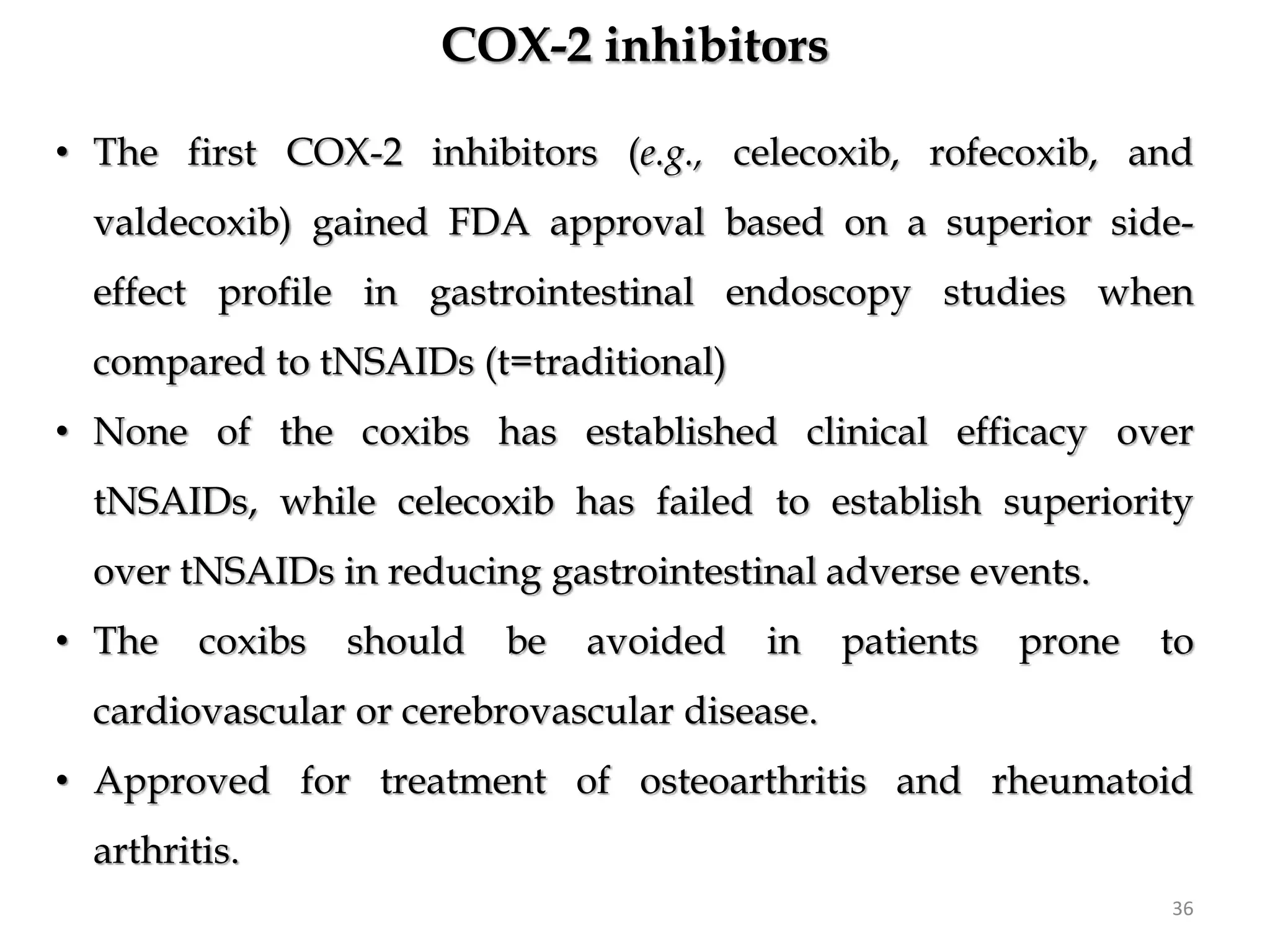This document discusses autacoids and drugs used for the treatment of inflammatory disorders. It defines autacoids as biological factors that act like local hormones near their site of synthesis. Various classifications of autacoids are described, including biogenic amines, peptides, proteins, and membrane-derived lipids. Histamine is discussed in detail as an example autacoid. The document then covers antihistamines, their classifications, mechanisms of action, and examples of first and second generation agents. Finally, the document discusses eicosanoids and nonsteroidal anti-inflammatory drugs used for treating inflammation.



























































